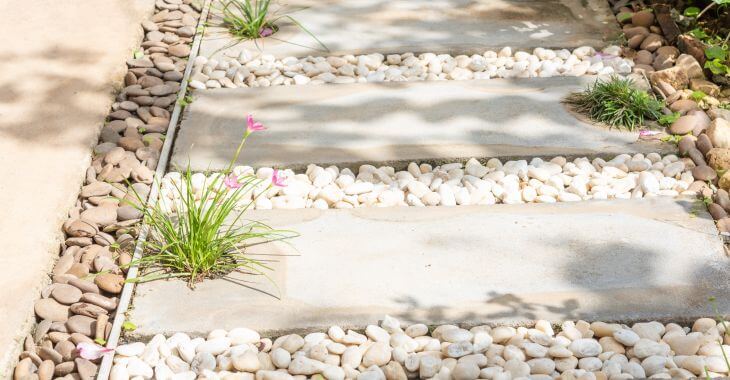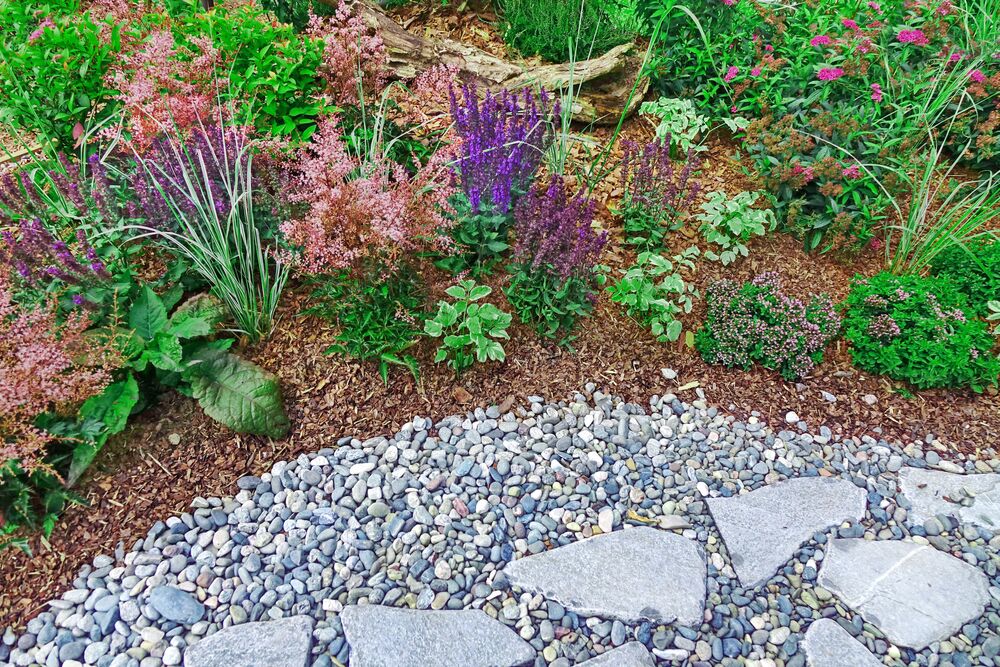Recognize the Significance of Lasting Practices in Modern Landscaping Services
Sustainable techniques in contemporary landscape design are increasingly identified for their necessary function in ecological preservation. By carrying out eco-friendly techniques, landscape design professionals can improve biodiversity and reduce their eco-friendly footprint. This technique not only raises building aesthetic appeals however additionally promotes area health. As the demand for greener services expands, the inquiry arises: just how can these lasting methods reshape the future of landscaping and our relationship with nature?
The Duty of Sustainable Landscaping in Environmental Conservation
While several might neglect the importance of landscaping in ecological preservation, lasting landscape design methods play an important role in advertising eco-friendly equilibrium. By focusing on native plants and minimizing water usage, these techniques assist maintain local biodiversity and reduce the stress on water resources. In addition, sustainable landscaping can boost dirt health with organic practices, which cultivates a much more resistant ecosystem.Moreover, incorporating permaculture concepts enhances land efficiency while reducing ecological effect. This strategy urges the usage of natural bug control and lowers reliance on chemical fertilizers, consequently protecting bordering ecosystems. Landscaping that concentrates on sustainability likewise contributes to carbon sequestration, aiding to reduce climate adjustment effects.Furthermore, environment-friendly landscape design creates habitats for wild animals, promoting a varied series of species. By involving in lasting techniques, landscapers not only improve rooms but also actively join the bigger initiative to shield the environment for future generations.
Advantages of Eco-Friendly Practices for Landscaping Professionals
Environment-friendly techniques in landscape design offer numerous advantages for experts in the field - St. Louis MO landscaper. These approaches not just add to a decreased environmental influence but also improve property worth and bring about long-lasting price savings. By taking on lasting strategies, landscaping specialists can produce an extra feasible future for both their companies and the world
Minimized Ecological Influence
As landscape design specialists significantly take on environmentally friendly techniques, they contribute greatly to lowering the ecological influence of their solutions. Implementing sustainable methods such as natural plant foods, native plant option, and reliable watering systems reduces making use of dangerous chemicals and saves water resources. These practices not just boost dirt health but also support neighborhood biodiversity by developing habitats for wildlife. By prioritizing using renewable energies and lowering waste, landscape design professionals can considerably lower their carbon impact. Furthermore, incorporating environment-friendly technologies, such as solar-powered devices, additionally reduces reliance on fossil fuels. In general, these eco-friendly strategies cultivate a healthier ecological community, showing the essential duty that sustainable landscape design plays in ecological stewardship.
Enhanced Home Value
Buying sustainable landscaping methods can greatly improve building value, with researches suggesting that homes with properly designed environment-friendly areas can see a boost of up to 15% in market value. Environment-friendly landscapes not just bring in potential purchasers but also produce a long lasting impression that emphasizes a commitment to environmental stewardship. Features such as native plants, water-efficient watering systems, and absorptive paving add to visual allure while minimizing upkeep expenses. Furthermore, homes with lasting landscaping commonly have reduced water intake and power prices, contributing to their attractiveness. As awareness of climate adjustment and sustainability surges, purchasers progressively prioritize homes that mirror eco-conscious worths, making lasting landscaping a calculated investment for residential or commercial property proprietors looking for to optimize their return.
Long-Term Expense Savings
Sustainable landscape design techniques supply substantial lasting cost financial savings for professionals in the industry. By utilizing native plants and drought-resistant landscape design, professionals can decrease water use and reduced watering costs. Additionally, utilizing natural plant foods and insect control methods minimizes chemical purchases and advertises much healthier soil, resulting in decreased upkeep expenditures with time. Implementing effective energy resources, such as solar-powered lighting, in addition lowers functional costs. Additionally, sustainable methods usually lead to fewer fixings and replacements because of the use of long lasting products and styles that endure ecological difficulties. By purchasing environmentally friendly approaches, landscape design specialists can not just enhance their solution offerings but also delight in ongoing financial savings that add to their total earnings and sustainability in an open market.

Water Preservation Methods in Landscaping
Efficient water preservation methods are vital in landscaping, especially in areas encountering water scarcity. One prominent method is the application of xeriscaping, which utilizes drought-resistant plants and reduces the requirement for extra watering. Furthermore, using drip irrigation systems can considerably reduce water waste by delivering moisture directly to the plant roots. Rain harvesting is another reliable strategy, allowing property owners to collect and save rain for landscape use. Dirt wetness sensing units can better enhance water performance by checking soil problems and notifying irrigation timetables. Mulching is additionally advantageous, as it assists maintain soil wetness while subduing weeds. Landscape designers are urged to develop contour yards that advertise natural water drain and decrease overflow. By embracing these water preservation techniques, landscape design solutions can add to lasting methods while guaranteeing that greenery flourishes also in water-limited atmospheres.
Advertising Biodiversity Via Indigenous Plant Selection
A varied selection of native plants can substantially improve biodiversity in landscape design jobs. By selecting plants that are aboriginal to a certain area, landscapers can produce why not try these out atmospheres that cultivate a balance of environments. Indigenous plants are adapted to local environment conditions and soil kinds, needing much less water and maintenance contrasted to non-native species. This adjustment urges the existence of native wildlife, Full Article such as pollinators, birds, and useful insects, which depend on these plants for food and habitat.Furthermore, native plants play a vital role in dirt health and wellness by minimizing disintegration and improving vitamins and mineral biking. By promoting a variety of types, landscapers can produce resilient landscapes that are much better geared up to withstand parasites and illness. Consequently, this strategy sustains the general health of the setting, contributing to sustainability. Emphasizing native plant selection not just beautifies rooms yet likewise grows eco-friendly stability, making it a significant element of modern-day landscaping practices.
Waste Decrease Methods in Landscape Upkeep
Carrying out waste reduction methods in landscape maintenance can significantly reduce environmental effect while making the most of source efficiency. One efficient technique includes composting organic waste generated during maintenance tasks, such as turf trimmings and trimming debris. This technique not only draws away waste from land fills but additionally enhances soil health. Additionally, making use of compost efficiently can minimize the requirement for chemical fertilizers and watering, consequently saving resources.Another strategy is to adopt precision landscape design methods, which concentrate on targeted applications of water and nutrients based on particular plant demands. This decreases unnecessary waste and boosts plant wellness. Implementing a regular maintenance schedule can also decrease over-pruning and too much waste generation. Picking resilient products for landscape design tasks warranties long life, inevitably lowering the frequency of replacements. Collectively, these techniques add to a more sustainable technique in landscape maintenance, fostering a much healthier community while decreasing general waste production.
The Aesthetic Effect of Lasting Landscape Design
While typical landscape design often focuses on aesthetics over environmental factors to consider, sustainable landscaping integrates beauty with environmental duty (Landscaping St. Louis Missouri). This approach accepts indigenous plants, which not just thrive in local problems but likewise support regional wild animals, boosting the overall visual charm of a landscape. By utilizing natural materials and eco-friendly design methods, lasting landscape design produces vivid spaces that reflect the natural environment.Furthermore, the incorporation of aspects such as rain yards and absorptive leading not just boosts looks yet additionally adds to effective water management. Using sustainable techniques can cause unique and inviting exterior areas that motivate biodiversity and foster a sense of place.Ultimately, lasting landscaping goes beyond plain aesthetic charm; it grows a gratitude for nature while promoting environmental stewardship. This integration of charm and sustainability not only boosts the landscape yet additionally influences a higher link in between people and their environment
Community Engagement and Education And Learning in Lasting Practices
Sustainable landscaping not only boosts the aesthetic appeal of outdoor rooms yet likewise works as a platform for community involvement and education and learning. Through workshops and regional initiatives, landscape design services can foster a deeper understanding of sustainable techniques among community participants. These programs commonly emphasize the importance of indigenous plants, water conservation, and natural gardening strategies, enabling participants to gain hands-on experience.Moreover, neighborhood gardens play an essential function in promoting sustainability while providing a common area for communication. Such efforts encourage partnership and the exchange of concepts, producing a feeling of ownership and duty among individuals. By incorporating educational elements into their services, landscape design professionals can properly link the gap in between ecological stewardship and neighborhood participation. Ultimately, this involvement not only grows a more educated public yet also improves the collective commitment to lasting techniques, making sure that these principles are supported for future generations.
Frequently Asked Concerns
What Are the Expenses Connected With Applying Lasting Landscape Design Practices?
The prices linked with implementing sustainable landscaping techniques often include initial investments in eco-friendly materials, ongoing upkeep expenditures, and possible training for personnel. Nonetheless, long-lasting cost savings and environmental check my source benefits can surpass these ahead of time costs.

How Can House Owners Start With Lasting Landscaping in the house?
House owners can begin lasting landscape design by assessing their lawn, picking native plants, executing efficient watering systems, composting natural waste, decreasing chemical usage, and including mulch to preserve wetness, eventually promoting a green outside setting.
Are There Accreditations for Lasting Landscape Design Professionals?
Different qualifications exist for sustainable landscaping experts, consisting of the Organization of Professional Landscape Designers' certification and the Sustainable Websites Effort. These qualifications emphasize ecological methods, advertising environmentally friendly landscaping methods and enhancing expert trustworthiness within the sector.
Just How Does Environment Adjustment Affect Landscaping Practices?
Climate change significantly influences landscape design practices by altering plant development patterns, increasing insect populations, and necessitating making use of drought-resistant plants. Landscapers must adapt their strategies to assure lasting and resistant exterior atmospheres.
What Plants Are Best for Low-Maintenance Sustainable Gardens?
The very best plants for low-maintenance lasting yards consist of indigenous types, succulents, and drought-resistant ranges. St. Louis MO landscaper. These plants need marginal water, thrive in regional problems, and assistance neighborhood environments, developing a resistant and eco-friendly yard